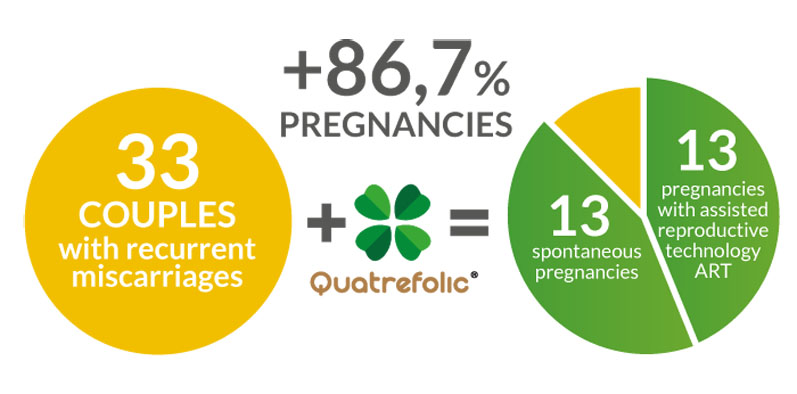As a starting point, notes Lorena Carboni, Senior Scientific Communication Specialist and Product Manager at Gnosis by Lesaffre, clarifying the distinction between naturally occurring folate and folic acid (FA) is helpful.
FA is the non-biologically active form of folate (the natural form). In the body, FA needs to partner with the enzyme dihydrofolate reductase (DHFR) to create dihydrofolate that, in turn, is converted into tetrahydrofolate, then into 5,10-methylene tetrahydrofolate and, finally, into 5-methylfolate.
Another key enzyme, methylenetetrahydrofolate reductase (MTHFR), is also involved in the conversion process.1–3 Folate doesn’t need to go through that obstacle course; it’s converted straight into 5-methylfolate (5-MTHF).
However, supplementation with active folate 5-MTHF bypasses folate metabolism entirely and tends to lose efficacious integrity along the way. 5-MTHF is directly absorbed to exert biological activity.1–3
There is mounting evidence to support the role of 5-MTHF in fertility for both women and men. And, as more couples seem to be struggling with fertility and seeking options before assisted reproductive technologies (ARTs), folate as 5-MTHF could play a starring role.
According to the World Health Organization, approximately 15% of reproductive-aged couples worldwide grapple with fertility problems.4
Infertility in women: Any disruption in the structure or function of any part of the female reproductive system can present as infertility. Circumstances affecting ovarian development, oocyte (egg) maturation and quality, fertilisation competence, preimplantation integrity and implantation sufficiency may result in prolonged difficulty in achieving pregnancy.
Poor folate status disrupts DNA methylation, increases blood homocysteine levels and oxidative stress … and is known to be a significant factor related to the pathogenesis of fertility disorders.
Infertility in men: Healthy spermatogenesis is the key characteristic of male fertility. Genetic and environmental factors adversely affect spermatogenesis, often leading to male infertility.
Studies in men have demonstrated a positive correlation between serum folate concentrations and density and normal sperm morphology. Low folate levels in semen have been linked to poor sperm DNA stability and even damage.
The MTHFR factor
Research has also shown that MTHFR mutations (or polymorphisms) can contribute to infertility in men and women. Polymorphic MTHFR may function with only 55–70% efficiency compared with normal MTHFR.
MTHFR polymorphism is linked to foetal non-viability rates of 4–7%, thus playing a significant role in human fertility.5,6
The homocysteine-folate ratio
Homocysteine (Hcy) is an inhibitor of the methylation process and a powerful pro-oxidant. Research has shown that a disproportionate ratio of Hcy (high) and folate (low) can exacerbate fertility issues in women and increase the risk of early miscarriage. In men, folate deficiency results in Hcy overproduction causing impaired spermatogenesis.7,8
5-MTHF and fertility enhancement
Several studies have examined couples trying to conceive, including those who consumed 5-MTHF. In one, both partners in seven couples with histories of miscarriages and inefficient folate metabolism consumed 5-MTHF daily for 4 months. Notably, both partners in five couples had the main MTHFR polymorphism (C677T).
At the study’s end, six couples achieved pregnancy (three spontaneous pregnancies and deliveries, two pregnancies at 16 and 25 weeks, and one in the first trimester).9
In another larger study, 33 couples with a variety of fertility problems lasting for at least 4 years — and each with at least one partner with an MTHFR mutation — supplemented with 5-MTHF for 74 days (corresponding to the entire cycle of spermatogenesis) before attempting conception or ART; this led to successful spontaneous pregnancies in 13 couples and 17 with ART (Figure 1).10

Figure 1: A study of couples with histories of infertility showed that supplementing with a vitamin B complex including Quatrefolic® had a higher chance of clinical pregnancy than those using folic acid alone
Further, a study of 89 couples with at least 3 years of infertility and one partner with MTHFR polymorphism supplementing with 5-MTHF had significantly reduced plasma homocysteine levels.11
Folate and pregnancy
Hcy is a common amino acid found in the bloodstream, but excessive amounts are considered to be an independent causal factor in pregnancy complications and adverse neonatal outcomes.
Therefore, the goal for women is to ensure that their homocysteine levels remain in healthy ranges; this is especially true for women who have an MTHFR polymorphism, a known antagonist of folate-dependent Hcy metabolism.
Adverse maternal and foetal Hcy metabolism (and low levels of active folate) has been associated with foetal neural tube defects, pre-eclampsia and abruption, and recurrent pregnancy loss. Evidence shows that 5-MTHF supports healthy Hcy levels.
Two months of daily consumption of 5-MTHF combined with B6 and B12 was more effective in reducing Hcy blood levels compared with FA.12 Pregnant women who supplemented with 5-MTHF through the 24th week of pregnancy showed better levels of the active 5-MTHF in their blood than the same dose of FA.
This study also confirmed the importance of folate supplementation to avoid developing neural tube defects.13 A study of 269 subjects compared the efficacy of a vitamin B complex (5-MTHF and vitamin B6) with FA in relation to clinical pregnancy and live birth in infertile women undergoing ART.
More women in the B complex group became pregnant and gave birth than those in the FA group.14
Numerous studies have found that high Hcy concentrations are associated with several pregnancy complications.
These include recurrent pregnancy loss, neural tube defects, pre-eclampsia, preterm delivery, placental abruption, foetal growth restriction and gestational diabetes mellitus.15–22 Additionally, Hcy levels have been associated with neonatal birth weight: the higher the maternal levels, the lower the weight.23
Emerging areas for folate
Folate can be positioned as the healthy ageing B vitamin as emerging evidence solidifies its multitasking abilities to protect the heart, brain and bones.
One study found that folate concentration in the cerebrospinal fluid diminishes with age — particularly in adults older than 70 — providing further evidence of a line between folate concentration and age, highlighting a direct connection with the nervous system for the first time.24
Folate is the subject of many studies investigating its cardiovascular, mood, cognition and bone health benefits, which have Hcy in common. Knowing that folate can suppress Hcy production, research has suggested that supplementation may reduce the risk of cardiovascular disease by lowering Hcy levels.25
Thanks to various EFSA-approved health claims related to psychological functions, reducing tiredness/fatigue, cell division, normal Hcy metabolism and the immune system, folate presents a good solution for older adults.26
Supplementing with the proper form of folate is essential to quickly re-establish plasma folate levels and counter the variety of physiologic changes that influence folate status and the need for medical care.
The choice for 5-MTHF
A distinctive and well-researched 5-MTHF used in the studies mentioned here is Quatrefolic®, the glucosamine salt of 5-MTHF (patented by Gnosis by Lesaffre).
Quatrefolic offers a significant advantage compared with previous generations of folates. Its high solubility and bioavailability allow Quatrefolic to deliver “finished” folate that’s directly used by the body without the need for metabolism.
This attribute makes Quatrefolic suitable for reproductive-age adults regardless of MTHFR polymorphism and ageing individuals.
References
- F. Scaglione and G. Panzavolta, Xenobiotica 44, 480–488 (2014).
- L.B. Bailey and J.F. Gregory, J. Nutr. 129, 779–782 (1999).
- L.B. Bailey, J. Nutr. 145(7), 1636S–1680S (2015).
- www.who.int/health-topics/infertility.
- Y. Ménézo, et al., J. Assist. Reprod. Genet. 38(9), 2383–2389 (2021).
- B. Wilcken, et al., J. Med. Genet. 40(8), 619–625 (2003).
- W.L. Nelen, et al., Obstet. Gynecol. 95(4), 519–524 (2000).
- H.F. Yuan, et al., Oncotarget. 8(15), 24130–24141 (2017).
- E. Servy and Y. Ménézo, Clin. Obstet. Gynaecol. Reprod. Med. 3(6): DOI: 10.15761/COGRM.1000204 (2017).
- M. Cirillo, et al., Int. J. Environ. Res. Public Health 18(23),12280 (2021).
- A. Clément, et al., J. Gynecol. Obstet. Hum. Reprod. 49(1), 101622 (2020).
- A. Mazza, et al., J. Biol. Regul. Homeost. Agents 30(3), 921–927 (2016).
- D. Dell'Edera, et al., Eur. Rev. Med. Pharmacol. Sci. 21(14), 3305–3311 (2017).
- M. Cirillo, Int. J. Environ. Res. Public Health 18(23), 12280 (2021).
- X. Zhao, et al., Medicine 99(40), e21962 (2020).
- U. Yadav, et al., Birth Defects Res. 113(7), 589–600 (2021).
- N.C. Serrano, et al., PLoS One 13(12), e0208137 (2018).
- X. Qiu, et al., J. Matern.-Fetal Neonatal Med. 31(20), 2673–2677 (2018).
- C. Dai, et al., BioMed. Res. Int. 2021, 1–14 (2021).
- T.A. Goddijn-Wessel, et al., Eur. J. Obstet. Gynecol. Reprod. Biol. 66(1), 23–29 (1996).
- H.L. Jiang, et al., Genet. Mol. Res. 15(4): DOI: 10.4238/gmr15048890 (2016).
- M.A. Guven, et al., Arch. Gynecol. Obstet. 274(6), 333–337 (2006).
- S. Cawley, et al., J. Matern.-Fetal Neonatal Med. 33(18), 3045–3049 (2020).
- T. Bottiglieri, et al., J. Neurol. Neurosurg. Psychiatry 69(2), 228–232 (2000).
- S. Yuan, et al., BMC Med. 19(1), 97 (2021).
- https://www.efsa.europa.eu/en/efsajournal/pub/1760.

